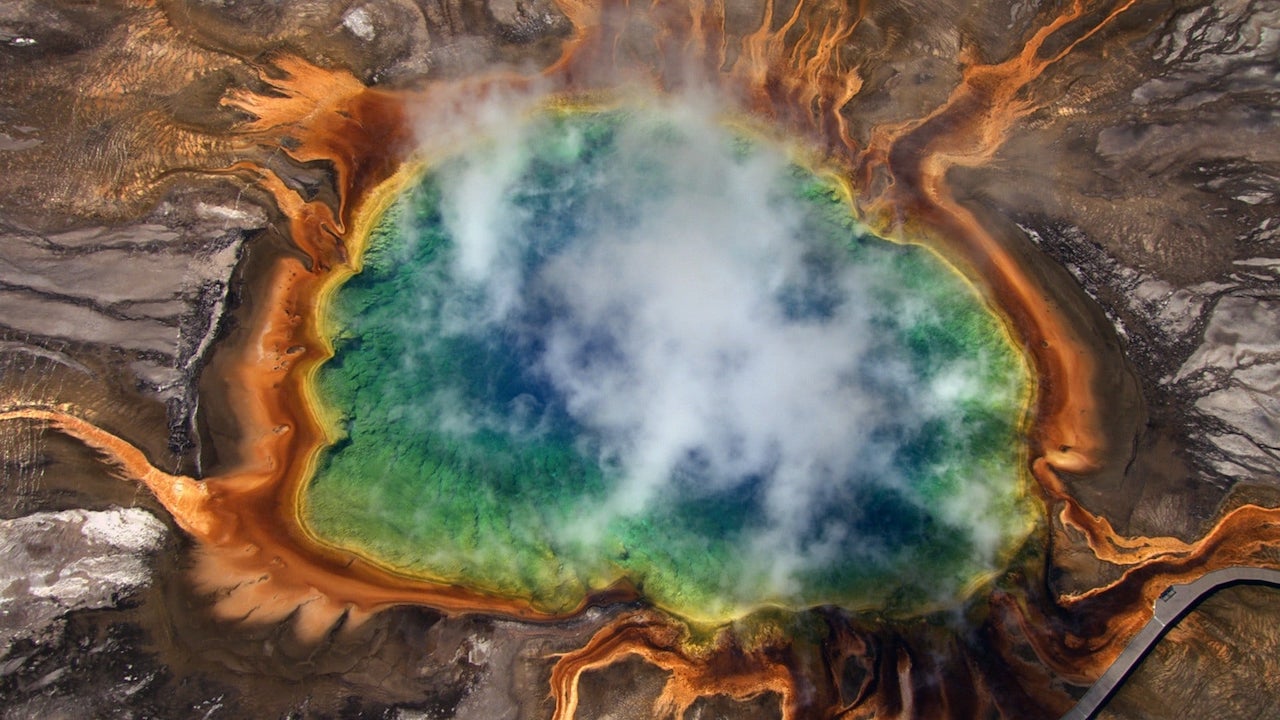Celebrate Earth Month with these 10 stunning nature docos
April is a time to be mindful of our precious home planet: these unforgettable films capture it from every angle.

You could easily celebrate Earth Month this April by stepping outside to touch grass…or you could stay in, and witness the world’s organic wonder through a whole new lens. Eliza Janssen picks 10 unmissable nature documentaries to highlight this month’s message.
Unless you’re some loser billionaire planning an escape to Mars, our planet Earth is the only home any of us will ever know; from its unbelievable, ancient natural landscapes to the bizarre cast of characters that inhabit it alongside we greedy homo sapiens.
Whether you want to rage against mankind’s impact through a searing screen manifesto, or just lay back and bask in breathtaking nature cinematography, you’re sure to learn more about our precious planet in one of these 10 sensational movies. King David Attenborough is right there on Netflix, too, but we’ve left his seminal Planet Earth and co. off this list in favour of feature-length explorations.

Blackfish (2013)
This eye-opening expose, about the cruelty of keeping killer whales in captivity, had a direct impact on the organisation it targets, with SeaWorld reporting a consistent loss in ticket sales ever since its release. Sweet. By focusing on one tragic “character”, the infamous orca Tilikum whose capture and treatment led to the deaths of three people, Gabriela Cowperthwaite’s angry doco challenges us to consider our complicity in mankind’s wrongful dominion over wild, powerful animals.

Fire of Love (2022)
Described as a “doomed love triangle”, this unconventional romance follows the fatal passions of married volcanologists Katia and Maurice Krafft. Its use of archival footage from the 80s and 90s gives each shot of broiling lava and rich, rocky landscapes a grainy and near-tangible aesthetic: you can practically feel the heat radiating off the screen. We all love nature, and are awed by miracles such as volcanic eruptions—albeit from a safe distance. What’s it like to let that fascination consume you, especially when shared with another?

The Giants (2023)
The newest movie on this list is a classic, uplifting underdog story, chronicling Australian politician Bob Brown’s resilient battle to protect some of the oldest and most unique biomes on the planet. Brown’s half-century-long struggle for Tasmania’s rivers and rainforests operates on two effective scales, capturing the petty human conflict and sweeping, ancient story of the life of trees at once. Inspiring, existentially challenging, and patriotic in the right ways.

Grizzly Man (2005)
The natural world can be beautiful, as many entries on this list will prove—but stoic German documentarian Werner Herzog never lets us forget that it’s also utterly terrifying. His classically gloomy narration hangs low over a portrait of animal obsession, following the bizarre life and brutal death of eccentric explorer Timothy Treadwell. Living amongst bears in Alaska, Treadwell seemed to believe “he was working with people in bear costumes rather than wild animals”. He pays dearly for his curiosity, and you’ll be helplessly drawn in too.

Home (2009)
If you ever yearn to fly above it all and see humanity’s problems from a new perspective, this lateral-thinking French doco is kindly available on YouTube—part of the filmmaker’s message to share an urgent birds-eye perspective of our impact on the planet. Compiled from almost 500 hours of footage captured from a small helicopter, this gargantuan effort reveals the stunning diversity of earth’s landscapes. But in visiting every single continent of the planet, it also finds an upsetting common thread: man’s destructive impact on oceans, glaciers, forests and savannahs.

Honeyland (2019)
At once a character study captured over three years, and a broader questioning of mankind’s vulnerable ties to one another. This Sundance-winning doco lets us act as a fly-on-the-wall (bee-on-the-wall, really) as humble Macedonian beekeeper Hatidze grapples with her changing social and environmental circumstances. You’ll be buzzing by the end of the true, neorealist drama filmmakers Ljubomir Stefanov and Tamara Kotevska weave together.

Koyaanisqatsi (1982)
Is this strictly a nature doco? Nah—it’s a non-narrative tone poem, with only soul-stirring Phillip Glass compositions as its eerie narration. This is because filmmaker Godrey Reggio reckons that human language is too weakened to begin to define the tumultuous state of our world. Groundbreaking footage slows down and speeds up scenes of racing populations and crumbling buildings, offering a little more grace to its images of birds, waves, and clouds.
You won’t forget unsettling Hopi prophecies emblazoned onscreen, such as this gem: “a container of ashes might one day be thrown from the sky, which could burn the land and boil the oceans.”

My Octopus Teacher (2020)
Snapped up by Netflix, this Oscar-winner is less interesting as a sentimental tale of human-animal friendship: hidden within its depths is a troubling depiction of how man imposes and projects his own desires onto the silent majesty of the natural world. Craig Foster’s budding relationship with a curious female octopus is visually stunning and entertaining in how it captures her dangerous, watery world. But is also exposes the human character’s desperation to avoid the drudgery and responsibilities on anthropocentric life on land—something you might be longing for, too, since you’re reading this list and all.

The Silent World (1956)
We wrap up with the oldest—and perhaps most hard-to-watch—film on our list, the only documentary to win the Palme d’Or until 2004. It’ll remind most modern viewers of Wes Anderson’s Steve Zissou, of course, but it’s also a jaw-dropping depiction of nature doco practices that have (thankfully) gone out of style. Archetypal French oceanographer Jacques Cousteau and his boys kill sharks for daring to snack on a whale; they drop dynamite into a coral reef to get a census of the dead fish that float to the surface.
Unbelievable stuff! Admittedly, the vibrant primary-colours of the film are, um, to die for. Available to watch on The Internet Archive, perhaps as a double feature with the first film up top.





































